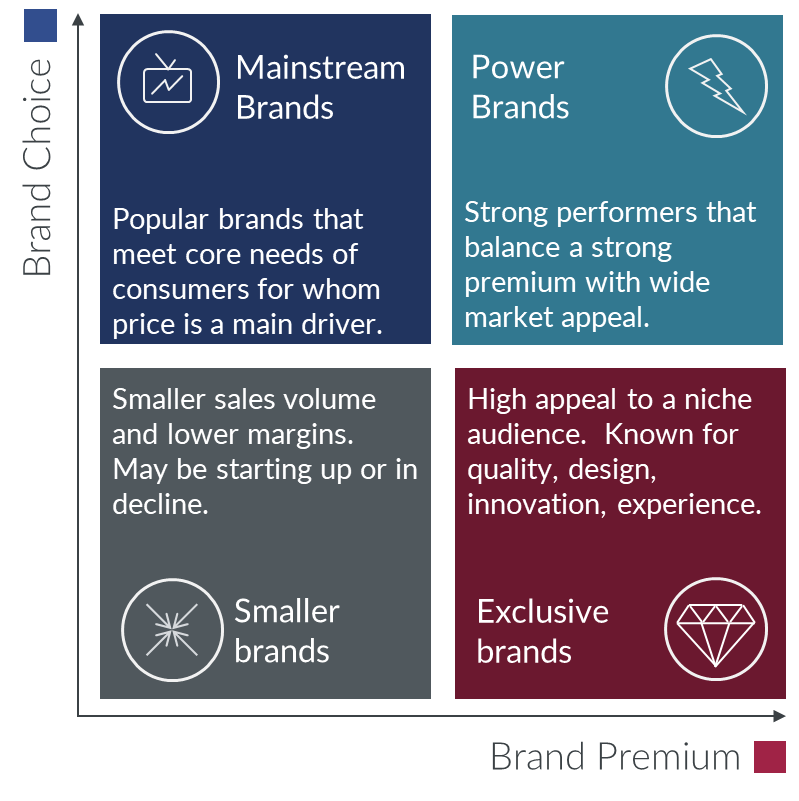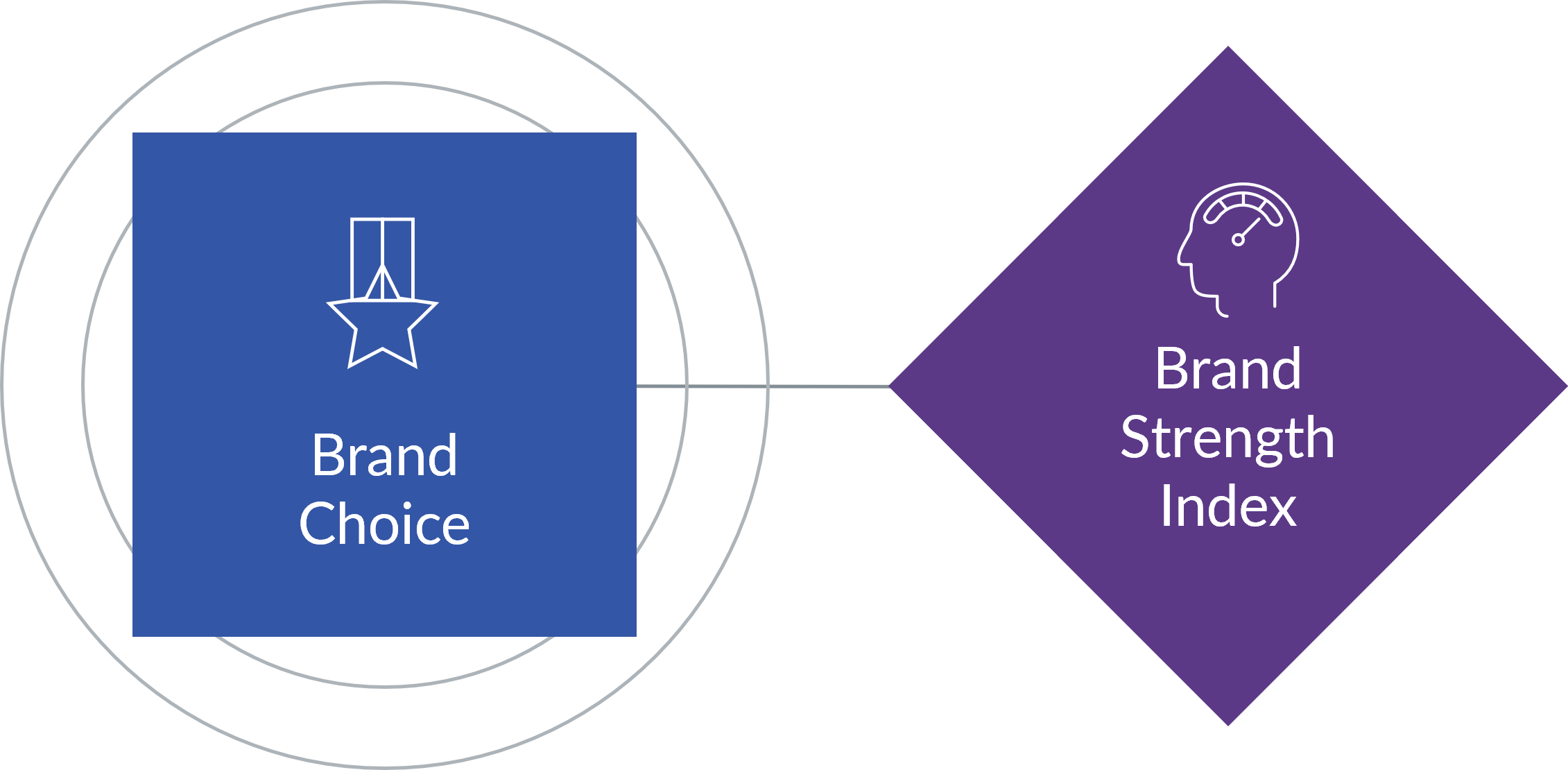What it means to be an Exclusive Brand
As the name suggests, Exclusive Brands appeal to a niche audience that wants only the best in quality, design and innovation, coupled with experience and longstanding prestige. Some good examples are Sony TVs in Italy, Alpecin shampoos in Germany and Lenor detergent in Poland.
Exclusive Brands account for around 15 to 20% of all brands globally but generate an impressive 20 to 25% of worldwide revenues due to their high price points.
High sales volumes are less important to these businesses than cultivating that premium image. Whilst sales do matter, the primary consideration is who is buying these products, rather than how many units are sold. To succeed, brands need to be targeted at the precise audiences they want to reach, with the right messaging and brand articulation being critical to success. A focus on the unique and distinctive nature of the brand is key.
Read on to discover how Exclusive Brands can create a strategy with strong appeal to higher end markets that are eager to pay a premium for niche products in their territory.
For more insights to help define your path to growth and find the right ways to build brand strength, watch our on demand webinar.

An Exclusive Brand's winning strategy
The way an Exclusive Brand handles its Brand Premium and Brand Choice strategies will naturally determine its ability to maintain or grow its overall Brand Strength and reputation. The advice below could help Exclusive Brands achieve this and retain their ‘best in class’ market position, although it should be remembered that each market and category work differently.
-

Premium pricing sits at the heart of the strategies for Exclusive Brands. Considerations must therefore include:
1. Building Brand Attachment. This means understanding the target audience and aligning the brand’s values and purpose with the consumer’s desire for quality and a superior product experience. Creating these perceptions enables exclusive brands to charge higher prices, enabling consumers to use the products or services as a way of showing the world who they are and aspire to be.
2. Innovation in design and approach are essential. Consumers who buy exclusive brands will pay more for unique, niche products and services, i.e. those with different features from ‘mainstream’ items, or that cannot be found elsewhere.
3. Experience is also important. Many exclusive brands have been around for a long time and trade on their time-honored reputations. Hence the discerning consumer in Poland will pay more for Lenor than other detergent brands. The customer experience must be consistent – and always backed up by superior product quality. The aim should be to delight the customer.
4. Endorsements are equally crucial, as is choosing the right person or organisation to represent the brand. Influencers and endorsers must share the brand’s – and consumer’s – exclusive values and outlook to be effective. -

There are two potential routes for Exclusive Brands: remain exclusive or build sales volumes to become Power Brands. To become a Power Brand, the solution lies in encouraging more of the right consumers to buy (Apple is a great example). Considerations include:
1. Building Brand Attachment. To remain exclusive, the affiliation needs to focus on persuading the consumer that the exclusive brand is (and will remain) the only choice if they are to satisfy their desire to have the very best. The product or service must feature differentiation and be clearly defined for a specific target audience segment.
2. Exclusive brands need to make an emotional connection to their audience by appealing to their sense of pride. Consumers want to stand out on a personal and brand level.
3. For those looking to become Power Brands, the key is to build familiarity and trust with a wider customer base. The focus should be connecting with, and then delighting, the customer. Advertising, online or offline depending on the target audience, is a good tactic to broaden reach without losing that ‘premium’ feel.
4. The focus should still be on attracting consumers that are less price-sensitive or willing to pay a premium; most product categories should still be accessible and desirable to the less price-sensitive consumer despite the broader appeal.
Insights from GfK Brand Architect
These rich brand insights come from GfK's brand framework, GfK Brand Architect. It takes a radically new approach to brand measurement by combining data with leading-edge analytics to measure the seven keys to brand strength and how they influence consumers decisions.
Learn more about the changes in the marketing landscape and explore what brands need to know to maximize their potential. Watch a webinar about how you can improve your brand intelligence and contribute to your business success
Topics to be covered include:
- The role brands play in driving value for their businesses
- Defining the four key brand segments and how brands can navigate these
- What drives brand strength, and how the drivers for Brand Choice differ from those for Brand Premium
- How GfK can provide personalized guidance to help brands achieve the best results
Each brand category is unique
Not all brands are power brands - some focus on luxury segments, others focus on the mainstream market, and still others focus on a very niche audience. Each of these segments has a different strategy to reach its audience. Curious to discover more about each of these segments? Read more below:
Mainstream Brands
These brands are popular with most because they meet the core needs of consumers who are most concerned about price.
Power Brands
These brands are strong performers that balance brand premium with wide market appeal.
Smaller Brands
These brands are looking to have a smaller sales volume and lower margins - either just starting up or in decline.



